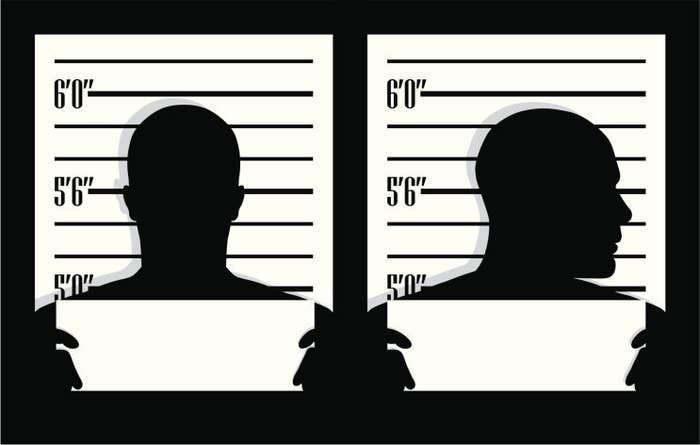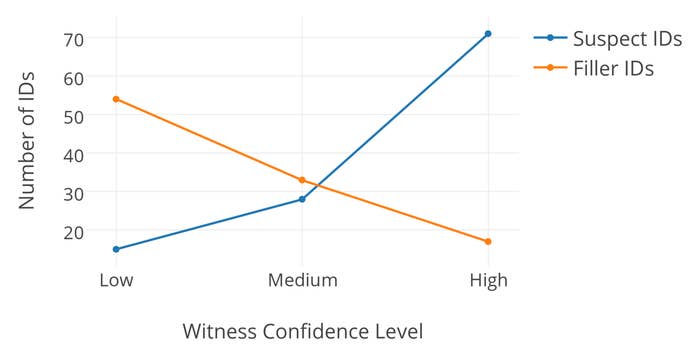
Over the last couple of decades, as DNA testing has freed hundreds of Americans who were wrongfully convicted of murder and sex crimes, eyewitnesses have gotten a bad rap — and rightly so. Their misidentifications played a role in more than 70% of the 336 wrongful convictions that have been overturned with DNA evidence since 1989.
But the problems surrounding eyewitness memory have more to do with police procedures than the witnesses themselves. According to a study out this week, a large proportion of misidentifications could be avoided if police investigators paid attention to one key factor: how confident witnesses say they are at the time of initial identification.
“A high-confidence initial identification is surprisingly strong evidence,” John Wixted, a psychology professor at the University of California, San Diego, and lead author of the new study, told BuzzFeed News. “And if you ignore that, you’re also going to increase the odds that a guilty person is going to go free.”
Scientists have long recognized that witness confidence tends to get inflated over time, thanks partly to reinforcement and encouragement by investigators and lawyers. So when a witness finally takes the stand, often months after the crime, they often sound far more sure of their pick than they were the first time.
Based on such research, several states have passed reforms saying that juries should be specifically instructed to disregard the confidence level of eyewitnesses.
But the new study, which looked at eyewitnesses to real crimes as opposed to mock crimes done in the laboratory, finds that not all confidence statements are created equal. Those taken at the beginning of the process can be surprisingly informative, the study found.
Wixted and his colleagues collaborated with the Houston Police Department to track 348 eyewitnesses to robberies in 2013. The witnesses were asked if they recognized the thief in an array of six photos.
The photos included one suspect and five “fillers.” All of them fit the witness’s basic description of the perp, and all of them were strangers to the witness. Perhaps most importantly, the cops showing the photo array were “blind,” meaning that they did not know which photo was the suspect, eliminating a strong source of potential bias.
If the witness identified one of the photos, they were then asked to describe their confidence level: high, medium, or low.
Witnesses who identified the suspect’s photo were far more likely to have high confidence than low, the study found. And conversely, witnesses who identified filler photos — which, by definition, are never the perpetrators — were far more likely to have low confidence.
Eyewitness Identifications By Confidence Level

The big downside of studies that rely on real police data is that the researchers don’t know whether each suspect was actually guilty — only that the fillers were not. But the study found the witness confidence levels correlated with the amount of other evidence against the suspect (such as fingerprints or video evidence), suggesting that highly confident witnesses were choosing guilty parties.
Basic math can also give a decent estimate of witness accuracy. Of the 88 eyewitnesses who made high-confidence identifications, 71 identified the suspect and 17 identified a filler. That rate of choosing a suspect (71 out of 88, or 81%) is much higher than chance (which would be 1 in 6, or 17%).
Those 17 filler picks — making up 19% of all identifications — were errors, for sure. But since filler errors are five times more likely than suspect errors, math says that there will be only one-fifth as many bad suspect identifications, Wixted said, or about 3 cases.
This neat and tidy logic assumes that police are carrying out identification procedures properly, using blinded administrators and fair photo arrays. But outside of this particular study, that’s a big assumption, independent experts say.
“They are critical caveats,” Gary Wells, a psychology professor at Iowa State University whose laboratory studies have also shown the importance of initial confidence ratings, told BuzzFeed News by email. “Their conclusions cannot yet be routinely applied to large portions of the U.S. because most jurisdictions are not using double-blind procedures and securing an explicit statement of confidence from the witness at the moment of the identification.”
Even when a lineup is done blind, “lots of things can happen before a lineup procedure even occurs that would encourage a witness to make the identification,” Brandon Garrett, a law professor at the University of Virginia, told BuzzFeed News. A cop could tell the witness beforehand that someone had been arrested, for example.
Fortunately, an increasing number of police departments are implementing eyewitness reforms. Last year, an influential report published by the National Academy of Sciences officially recommended that police departments document witnesses’ self-reported confidence at the time of the identification. And a 2013 survey of more than 1,000 police departments suggests that more than two-thirds are recording witness confidence statements.
“Now that the National Academy has laid in with their report, recommending blind and fair lineups, increasingly that will become the norm in the future,” Wixted said. “Their recommendations carry weight.”
What went down in the hundreds of DNA exoneration cases also lends some support to the conclusions of the new study. Garrett has taken a close look at the court transcripts of 161 of these cases that involved an eyewitness misidentification. In all of them, he found that eyewitnesses testified that the defendant was guilty.
But 125 of the cases — or 78% — included evidence that police had contaminated their initial identification with suggestive or encouraging remarks. And stunningly, in 92 cases — or 57% — testimony clearly indicated that the witness had not been certain at the first identification.
Unfortunately, that initial uncertainty didn’t seem to matter to the juries. “What the jury saw was a really confident and sympathetic eyewitness,” Garrett said. “It’s not surprising that these people were convicted.”
